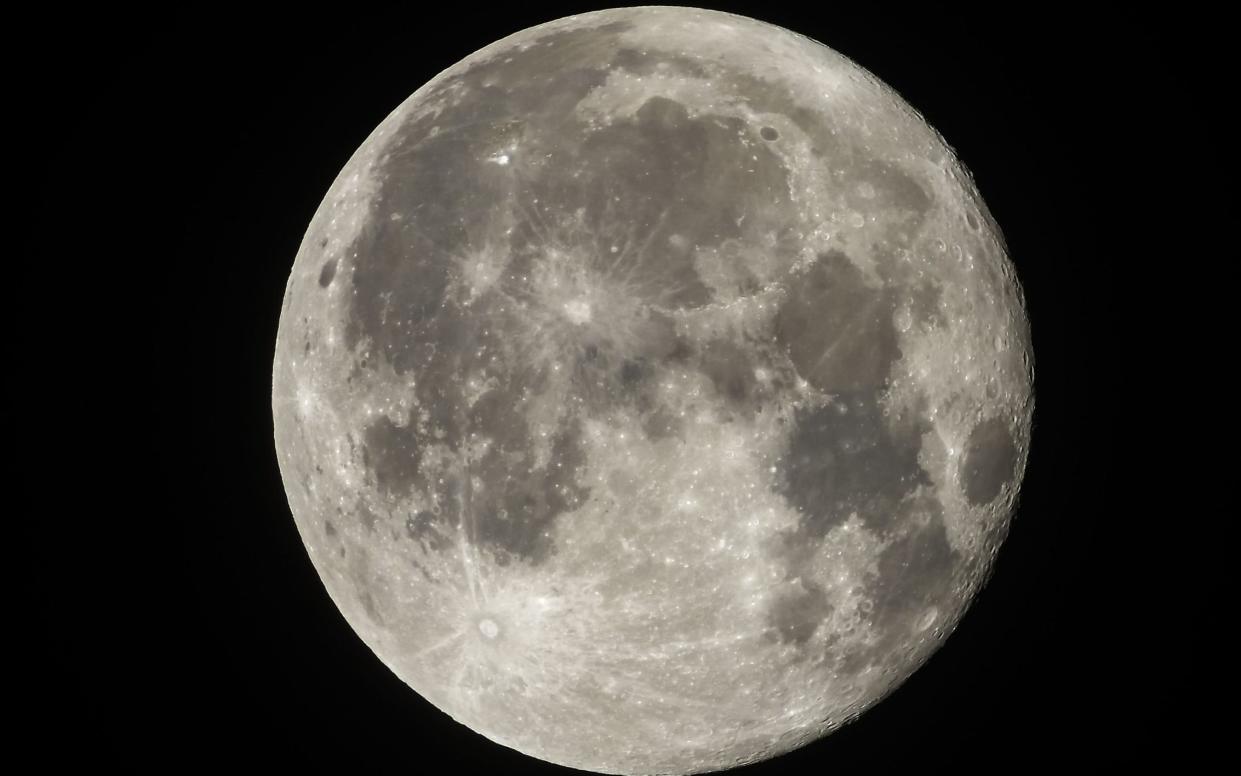New source of water found on the Moon

There may be more water on the Moon than previously thought after scientists discovered a new source which could make it easier for humans to set up future colonies on the lunar surface.
Water on the Moon is known to exist already in the form of ice permanently frozen in shaded regions of its poles.
However, a study of glass beads found in the lunar soil revealed that they are infused with water molecules, which would be relatively easy to extract.
Experts say there is now evidence of a continuous water cycle on the Moon and that any human trips there could see astronauts use the water in the glass beads for fuel and drink.
Chinese scientists studied glass beads picked up by the Chang’e 5 mission. Analysis revealed the glass was created when meteorites crashed on to the planet’s surface, causing lunar soil to be ejected into the air, heating up rapidly, before cooling down and landing back on the surface as glass.
The study, published in the journal Nature Geoscience by scientists from the Chinese Academy of Sciences, reports these beads then soak up water in the soil.
Beads can act like a sponge
“These glass beads can act like a sponge, soaking up water,” said Prof Lewis Dartnell, an astronomer at the University of Westminster and science author who was not involved with the study, told The Telegraph.
“This water comes from hydrogen atoms in the solar wind from the sun bonding to oxygen atoms in the minerals of the lunar surface.”
The scientists behind the findings claim there could be 270 billion tonnes of water stored in glass beads in the lunar soil. They add that as the water evaporates and is lost, it is replenished by the hydrogen in solar wind bonding with the oxygen in lunar soil, providing evidence of a cycle offering a constant source of water.
Prof Sen Hu, of the Chinese Academy of Sciences, found these glass beads are likely to be a new water reservoir on the Moon.
Prof Hu said: “These findings indicate that the impact glasses on the surface of the Moon and other airless bodies in the solar system are capable of storing solar wind-derived water and releasing it into space.”
According to the scientists, water trapped in impact glass beads could represent a potential resource for future lunar exploration that is relatively easy to extract.
Support human habitation
“The subsurface reservoir is replenished by the ongoing process of solar wind hydrogen bonding to oxygen, and the water created diffusing underground to be absorbed into glass beads,” Prof Dartnell said.
“The presence of water in the lunar surface is important as it would be a crucial resource for supporting long-term human habitation of the Moon.
“Water is needed for drinking, of course, but can also be split using electrolysis to create oxygen to breathe in the habitats.
“Future crewed missions are planned to land on the South Pole where they will have access to the ice trapped in the permanently shadowed regions of large craters such as the Shackleton.
“But the presence of water across the rest of the lunar surface will be important too,” he added.

 Yahoo News
Yahoo News 
